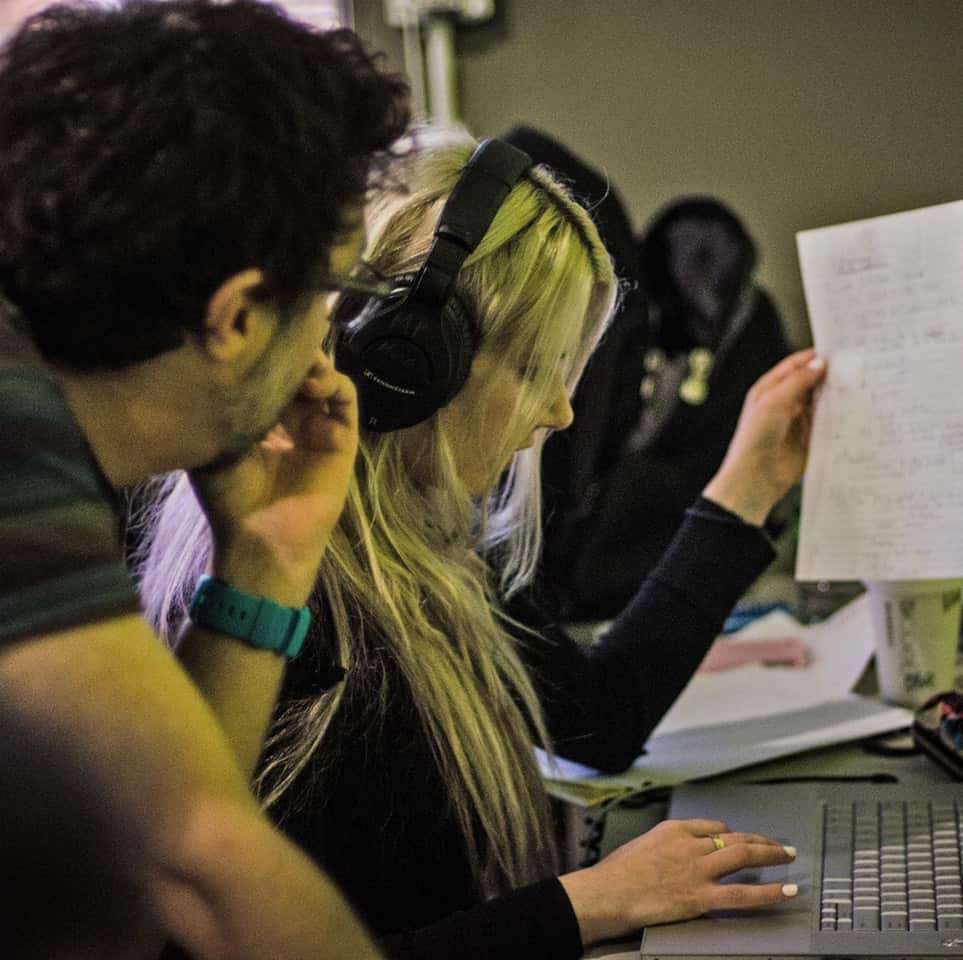How to Clean Up A Muddy Mix
Katie Gilchrest
If you’re working with a well-balanced band or high quality samples to begin with, mixing will be most likely be fairly smooth. However, a lot of elements in recording can provide too much sonic information, causing a mix to be crowded or boomy, with an excess of sounds overlapping in the same frequency space. Luckily, a few tricks exist to help clean up a muddy mix, with an end goal of a clear, professional sounding record.
- Mix in Mono
A great way to start a serious evaluation of your production is listen to everything in mono. A lot of electronic music mixes are already in mono, but if your mix isn’t, give this a try. Without any instruments panned, you can hear what might be interfering in the same space. Is the main melody instrument, most likely the vocals, still clear and cutting through? Or is it competing with another mid-range instrument, like a guitar or synthesizer? Mute different instruments, and compare how the mix sounds with and without them. These problems can be corrected with EQ, or simple amplitude level.
- Cut Lows and Low-Mids
More often than not, a muddy mix may be the result of a murky and crowded low end. It is good to get in the habit of cutting lower frequencies first to eliminate problems, rather than boost highs or mids. One simple way to experiment with this concept is to implement a highpass filter on every track. Though it is doubtful you will keep this filter on, it can give insight on how much clearer a mix can sound. A lot of instruments do not need the existing low frequency information, such as cymbals, vocals or guitar. In fact, some of the low frequency information on those tracks is completely unnecessary, especially if it is bleed from another instrument such as the kick drum or bass guitar. A good place to start cutting is around 300Hz. Make the cut around 2-5dB, as you do not want to end up with a thin sounding mix. If there is boominess in the drum kit, a cut between 300-600Hz on the toms and kick can do a lot to clean things up. If there is boxiness in guitar or keyboard, try cutting at 250Hz on these tracks.
Summary:
- Cut low frequencies before boosting higher ones
- Apply a temporary high pass filter to every track for evaluation
- Reduce 300Hz in any track that sounds muddy
- Cut anywhere from 300-600Hz in the drum kit
- Minimize boxiness in midrange instruments by cutting 250Hz
- A 2-5dB cut should work unless the frequency is problematic
- Limit Reverberation Effects
Reverb and other effects can crowd up a mix. Compare and contrast how the music sounds when all effects are muted. Reverb is great for adding space and dimension, but if the reverb time is too long it can start to obscure the clarity of other instruments. Consider the size of the room; is it really necessary to have your vocalist in a large cathedral with a 2 second reverberation time? Try limiting the time, reducing the “wetness”, or even using echo instead. Evaluate which instruments have the reverb as well; most of the time instruments like the kick drum or bass guitar do not need reverb. Depending on the track, feed the instruments you would like inside a reverberated space all to the same reverb bus. This can add great cohesiveness to a track. Conversely, sometimes there can be great separation and clarity when using different reverbs. Try putting each instrument in a different room, and pan the reverb to a different position on the Left-Right spectrum. This can add variety and breathing room to your sonic palette.
Summary:
- Mute effects and evaluate clarity on the dry tracks
- Scale reverberation time or reduce wetness if excessively long or muddy sounding
- Use echo instead
- Eliminate reverb on low end instruments such as kick drum or bass
- Feed instruments to one reverb buss for cohesion
- OR apply a different room to each instrument with reverb, and pan each to a different position
- Boost High Frequencies
Sometimes the muddiness cannot be corrected just by cutting. While cutting before boosting is always recommended, a boost can be the solution to a murky mix. The below table gives a rough guideline for various parameters: presence, clarity, sparkle and air. Every mix is different, and it is best to experiment and use your ears to determine what is best. Try to boost within a 2-4dB range, unless some serious correction is needed.
| Frequency Range | Timbre |
| 1,000 – 8,000 Hz | Presence |
| 2,000 – 9,000 Hz | Clarity |
| 5,000 – 15,000 Hz | Sparkle |
| 10,000 Hz – 20,000 Hz | Air |
The above four tips will give you a great starting point for cleaning up your mix. To avoid muddy mixes in the future, practice good technique during the recording session if at all possible. Limiting bleed, proper microphone placement, a good sounding room, and of course a well-balanced ensemble all contribute to a clear recording. In the end, a little EQ and good ears can go a long way for clarity and transparency in your mix.


